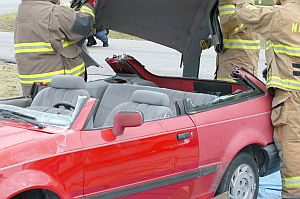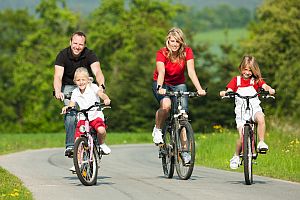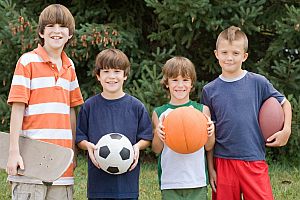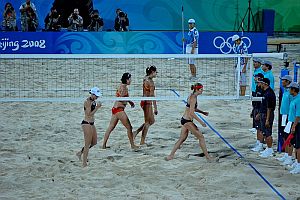 Over the past few years, health researchers around the world have become increasingly interested in exactly how our immune system develops. In particular, they want to understand how it might be shaped by the environment we live in—and especially by our interactions with microbes. One theory, known as the “hygiene hypothesis,” posits that reduced exposure to bacteria, symbiotic microorganisms (for instance, the flora that live in our digestive tract) and parasites makes us more susceptible to allergic diseases by suppressing the natural development of our immune system.
Over the past few years, health researchers around the world have become increasingly interested in exactly how our immune system develops. In particular, they want to understand how it might be shaped by the environment we live in—and especially by our interactions with microbes. One theory, known as the “hygiene hypothesis,” posits that reduced exposure to bacteria, symbiotic microorganisms (for instance, the flora that live in our digestive tract) and parasites makes us more susceptible to allergic diseases by suppressing the natural development of our immune system.
The basic idea is that modern standards of household and personal cleanliness, smaller family units and less outdoor time have all combined to limit the number and types of microbes many of us come into contact with, and that this has resulted in more people having immune systems that are over-sensitive or calibrated incorrectly. This line of thinking leads to an interesting question: Do people who have been exposed to more or different types of microbes actually have stronger immune systems? One way researchers have approached this question is to study individuals who have spent more time with animals (pets) or in the company of lots of children.
The Pet Effect
A recent Finnish study performed by researchers at Kuopio University Hospital found that babies who grow up in a home that has a pet are less likely to get coughs and colds in their first year of life than their counterparts who live in pet-free homes. Lead author of the study, Dr. Eija Bergroth, a pediatrician at the university, said, “We think the exposure to pets somehow matures the immune system so when the child meets the microbes, he might be better prepared for them.” Researchers believe that the dander that pets shed and the microbes that they bring in from outdoors prime babies’ newly-forming immune systems, teaching them to fend off allergies, bacteria and viruses.
Previous studies had found a link between the presence of pets in a baby’s home and a lower risk of allergies. And in a study performed on mice, exposure to household dust from a home in which a dog lived prevented a common respiratory virus that has been linked to the development of childhood asthma.
Researchers from the Finnish study, published in the journal Pediatrics, followed the health of 397 Finnish children during their first year of life. Parents recorded the state of their child’s health on a weekly basis, including any runny noses, coughing and ear infections. They also noted if the child took any antibiotics. The results of the study found that children with pets in the home had a 44% lower risk of contracting an ear infection and were 29% less likely to be prescribed antibiotics, when compared with babies from pet-free homes.
The type of pet in the home did make a difference in how likely babies were to become ill during their first year. Dogs in the home were associated with a 31% lower risk of illness in the first year, whereas the presence of cats in the home was associated with only a 6% improvement in risk. The greatest benefit was from outdoor pets (those that were not restricted only to the indoors), as they brought in a wider array of microbes on their fur.
According to researchers, early exposure to pets seems to be the key in developing greater resistance to microbes, as it is the time that a child’s immune system is learning to differentiate friendly from unfriendly microbes, and by getting a wide array of these in small amounts, babies’ immune systems become well-trained early on.
The Kid Effect
Maybe it’s just wishful thinking, but many moms and dads (as well as teachers and childcare workers) believe that being around young children boosts their immune system. It’s easy to see why this idea has some popular appeal. After all, young children typically have lots of contact with other young children, often in environments where lots of germs can be spread. They then bring these same germs into contact with adults, whose immune systems need to fight them off over a sustained period of time. The thinking goes that this, in turn, helps make these adults more resistant to them.
But what does the science actually say about this? Rigorous research is hard to come by, but perhaps the best anecdotal evidence can be found in the “common wisdom” imparted to new kindergarten and elementary school teachers. When one woman started teaching in California, her school board warned her that she should probably plan her finances for the first year of teaching based on being out sick more than her allotted number of “sick days,” and thus not being paid for them. The woman, who had always been remarkably healthy, laughed at this advice, but then spent 25% of her first year at home sick, likely because of all the germs she picked up from kids in the classroom.
However, this same schoolteacher rarely ever got sick again. Her exposure to a wide variety of germs transmitted by the kids did seem to boost her immune system over time, and enhanced her ability to be exposed to them in the future without getting sick herself. We can possibly infer that the same thing happens with small children in the home—they pick up germs at school and bring them home where the parents are exposed to them. This exposure then builds immunity over time rather than diminishing it. Dr. Jordan S. Orange, chief of immunology, allergy and rheumatology at Texas Children’s Hospital explains the simple mechanics of this “early exposure” process this way: “When you get it [immunity], you have it. So, if you get it earlier, you’re going to be immune earlier.”
 Mark Teixeira has been the New York Yankees’ first baseman since 2009. At 32 years old, Teixeira’s physical condition is very important to him, which is why he uses the regular services of his chiropractor, Gil Chimes, who is one of the Yankees’ team chiropractors and who is the clinical director of a thriving practice, Greenwich Sports Medicine, in Greenwich, CT. Teixeira visits Chimes once a week for a two-hour session.
Mark Teixeira has been the New York Yankees’ first baseman since 2009. At 32 years old, Teixeira’s physical condition is very important to him, which is why he uses the regular services of his chiropractor, Gil Chimes, who is one of the Yankees’ team chiropractors and who is the clinical director of a thriving practice, Greenwich Sports Medicine, in Greenwich, CT. Teixeira visits Chimes once a week for a two-hour session. Retired Brigadier General Becky Halstead is no stranger to pain. She spent her entire adult life in the military, and was the first female graduate from West Point to become a general officer. She has seen battle all over the world, including in Iraq. But she has also fought her own personal battle—with fibromyalgia.
Retired Brigadier General Becky Halstead is no stranger to pain. She spent her entire adult life in the military, and was the first female graduate from West Point to become a general officer. She has seen battle all over the world, including in Iraq. But she has also fought her own personal battle—with fibromyalgia. Even if your recent fender bender didn’t seem too serious, there’s still a very real chance that you or your passengers may have been hurt. That’s because even the most minor car accidents can cause hidden injuries and delayed symptoms. And while damage to your car is likely obvious and easy to assess, evaluating damage to your body may be far more difficult. In fact, it’s not unusual for a driver or passenger to walk away from a collision with potentially serious musculoskeletal injuries (such as a concussion or whiplash), without knowing it.
Even if your recent fender bender didn’t seem too serious, there’s still a very real chance that you or your passengers may have been hurt. That’s because even the most minor car accidents can cause hidden injuries and delayed symptoms. And while damage to your car is likely obvious and easy to assess, evaluating damage to your body may be far more difficult. In fact, it’s not unusual for a driver or passenger to walk away from a collision with potentially serious musculoskeletal injuries (such as a concussion or whiplash), without knowing it.





